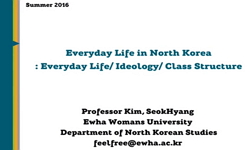Background: To determine the association between type 2 diabetes mellitus and the consumption of various fruits.Methods: The Korean Genome And Epidemiology Study is an ongoing prospective longitudinal cohort study of community dwellers and participant...
http://chineseinput.net/에서 pinyin(병음)방식으로 중국어를 변환할 수 있습니다.
변환된 중국어를 복사하여 사용하시면 됩니다.
- 中文 을 입력하시려면 zhongwen을 입력하시고 space를누르시면됩니다.
- 北京 을 입력하시려면 beijing을 입력하시고 space를 누르시면 됩니다.
https://www.riss.kr/link?id=A108926370
-
저자
Yu Hojun (Department of Family Medicine, Seoul National University Hospital, Seoul, Korea) ; Lee Cheol Min (Department of Family Medicine, Seoul National University Hospital Healthcare System Gangnam Center, Department of Family Medicine, Seoul National University College of Medicine, Seoul, Korea) ; Oh Seung-Won (Department of Family Medicine, Seoul National University Hospital Healthcare System Gangnam Center, Department of Family Medicine, Seoul National University College of Medicine, Seoul, Korea)
- 발행기관
- 학술지명
- 권호사항
-
발행연도
2024
-
작성언어
English
- 주제어
-
등재정보
KCI등재,SCOPUS
-
자료형태
학술저널
- 발행기관 URL
-
수록면
44-50(7쪽)
- DOI식별코드
- 제공처
-
0
상세조회 -
0
다운로드
부가정보
다국어 초록 (Multilingual Abstract)
Background: To determine the association between type 2 diabetes mellitus and the consumption of various fruits.Methods: The Korean Genome And Epidemiology Study is an ongoing prospective longitudinal cohort study of community dwellers and participants (men and women, aged 40–69 years) recruited from the national health ex-aminee registry of Korea. Their individual consumption habits for 12 different fruit types were recorded using food frequency questionnaires. The fruits were then divided into three groups according to their glycemic indexes and glycemic loads. Participants with extreme caloric intakes, pre-existing type 2 diabetes mellitus, chronic kidney dis-eases, chronic liver diseases, and ongoing cancer treatments were excluded. The incidence of type 2 diabetes in the cohort was identified through self-reporting and supplemented by glycated hemoglobin and fasting blood glucose levels.Results: A total of 2,549 cases of type 2 diabetes were documented during 283,033.8 person-years of follow-up. After adjusting for personal, lifestyle, and dietary risk factors for diabetes, the pooled hazard ratio of type 2 diabetes for every serving per week of total whole fruit consumption was 1.02 (95% confidence interval [CI], 0.99–1.06; P=0.2). With mutual adjustment of individual fruits, the pooled hazard ratios of type 2 diabetes for every serving per week were 0.94 (95% CI, 0.88–1.00; P=0.039) for bananas, and 0.90 (95% CI, 0.84–0.96; P<0.001) for grapes.Conclusion: Our findings suggest associations between the consumption of certain fruits and the risk of develop-ing type 2 diabetes. A greater consumption of grapes was significantly associated with a lower risk of type 2 diabetes in our cohort, but the total amount of fruit consumption was not associated with a reduced risk.
동일학술지(권/호) 다른 논문
-
Gender-Based Violence and Women Reproductive Health in War Affected Area
- 대한가정의학회
- Shalak Manar
- 2024
- KCI등재,SCOPUS
-
- 대한가정의학회
- Kunasagran Priya Dharishini
- 2024
- KCI등재,SCOPUS
-
Women’s Health and Primary Care
- 대한가정의학회
- Seung-Won Oh
- 2024
- KCI등재,SCOPUS
-
The Crucial Role of Political Will in Advancing Primary Health Care
- 대한가정의학회
- Cordero Jr Dalmacito A.
- 2024
- KCI등재,SCOPUS






 KCI
KCI






